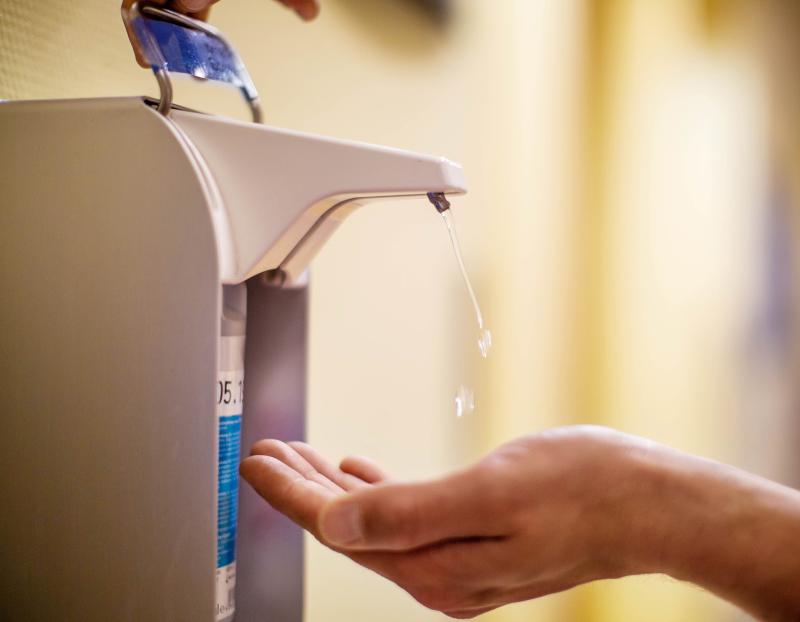Constant vigilance is key to restaurant self-preservation
In spite of the carefully written rules and regulations that help restaurateurs keep their facilities clean, food sanitation is pretty much a matter of trust.
A couple of months ago, I had the opportunity to interview Marc Eoppolo on my radio show. He is director of Community Environmental Health Services at the Division of Public Health’s Health Systems Protection Section. In short, he and his team of inspectors keep an eye on Delaware restaurants. Marc is the first to admit that they can’t be everywhere at once, and that it is certainly in a restaurant owner’s best interests to follow the common-sense rules that help avoid food-borne illnesses. As I said, it’s all about trust and self-interest. Case in point: When restaurants are forced to close because of their negligence, employees become jobless, and the owners’ names are tarnished forever. I want to believe that the great majority of people who invest their time, resources and energy into opening a food service establishment do not want all their efforts to end that ignominiously.
Restaurants are people, and people are fallible. So nowhere is it more important that employees work as a team to keep things clean and avoid cross-contamination that could result in sickness. It’s a simple fact that there might be things on your hands that others might not want to put into their mouths.
During my visit to the Ocean City Hotel Motel Restaurant Association trade show last year, I was impressed that almost everyone who was cooking or prepping was wearing food-handling gloves. Though I pretty much expected that, I was even more impressed when I noticed that the great majority of food handlers were changing into a new pair of gloves after touching money or anything other than food, such as credit cards or computer keyboards. All this concern for cross-contamination got me thinking. So many of the dire warnings we’ve heard are nothing more than standard operating procedure for any properly run eatery. (Need I direct your attention to the words “properly run”?)
Cross-contamination is exactly what it sounds like: the unintentional transfer of bacteria, viruses, etc., from one substance (let’s say raw chicken, for example) to another surface (maybe a cutting board where you chop lettuce). Cross-contamination is the No. 1 culprit in the investigation of food-borne illnesses. Though that might seem obvious, hidden sources of cross-contamination can be overlooked by the untrained, the uncaring or just anyone in a rush.
Take the bathroom water faucets in a restaurant, for example. Though they might seem nice and shiny, remember that people touch them after they use the facilities, but before they wash their hands. So the less vigilant will dutifully turn on the water to wash their hands, then instantly recontaminate their hands when they turn the faucets off. The problem becomes even worse when they grab the bathroom doorknob as they leave. Might as well have never washed their hands to begin with.
The remedy to this microbial double whammy is simple: When you dry your hands after washing, use the paper towel to not only turn off the faucets, but also to handle the doorknob. Savvy restaurant owners locate a trash can by the door for just this reason. Sadly, the problem is harder to control when paper towels are replaced by electronic hand dryers. In these cases, creative acrobatics using elbows, arms, the back of your hands and your shirtsleeves might be your only clean escape from the bathroom. I’m impressed with the increasing number of restaurants that have installed special bathroom door handles that allow you to pull the door open using your upper arm. I’ve also noticed that more and more restaurants with electronic hand dryers are adding paper towels to minimize hand contact with obviously contaminated surfaces. Those critical precautions are not only for customers; they also apply to the food-handling employees – and affect the ultimate survival of their job.
Grocery stores are an obstacle course of bacterial and viral contaminants. Most stores provide antibacterial wipes by the front door for the express purpose of wiping the grocery cart handles. Skip that at your own peril: Whatever nastiness is on those cart handles will now be transferred to the fresh fruits, veggies and other products you fondle during the buying process – not to mention the outside surfaces of cartons, bottles, cans, wrappers, etc. Same thing with the control panels for self-checkout machines. The moment you press the keypad, your finger now shares whatever lurks there with everyone else’s button-pressing fingers. Another reason not to skip the hand sanitizer or antibacterial wipes that (we hope) are available near the entrances and exits. During the recent viral unpleasantness, I couldn’t help but laugh at (apparently) well-meaning store owners and managers who carefully covered the credit card keypads with plastic wrap. Ridiculous. So now the cooties are on the plastic wrap instead of the plastic buttons.
A thin silver lining in the recent dark cloud of restaurant closures is that it has forced critically thinking people to change their habits to protect themselves and their loved ones from microscopic beasties that have always thrived on publicly accessed surfaces.
Sadly, there will always be a lazy few who will dismiss cross-contamination precautions as too hard or an overreaction. Sorry: Science is science, and it’s those very individuals against whom we must protect ourselves. In the wise words of Director Marc Eoppolo, the tools and methods are there. We just need to use them.
Virologists and other experts have warned for years that the great majority of colds and flu cases originate by touching your eyes, nose or mouth with contaminated fingers. Watch your doctor! He or she is constantly washing his or her hands and using sanitizer – even when donning sterile gloves. If it’s good enough for your doctor, it’s good enough for you.
Use simple, everyday common sense. Blocking cross-contamination at the source is an effective way to do that. And well-run restaurants have no choice but to be experts at that very thing – if they want to stay in business.



















































